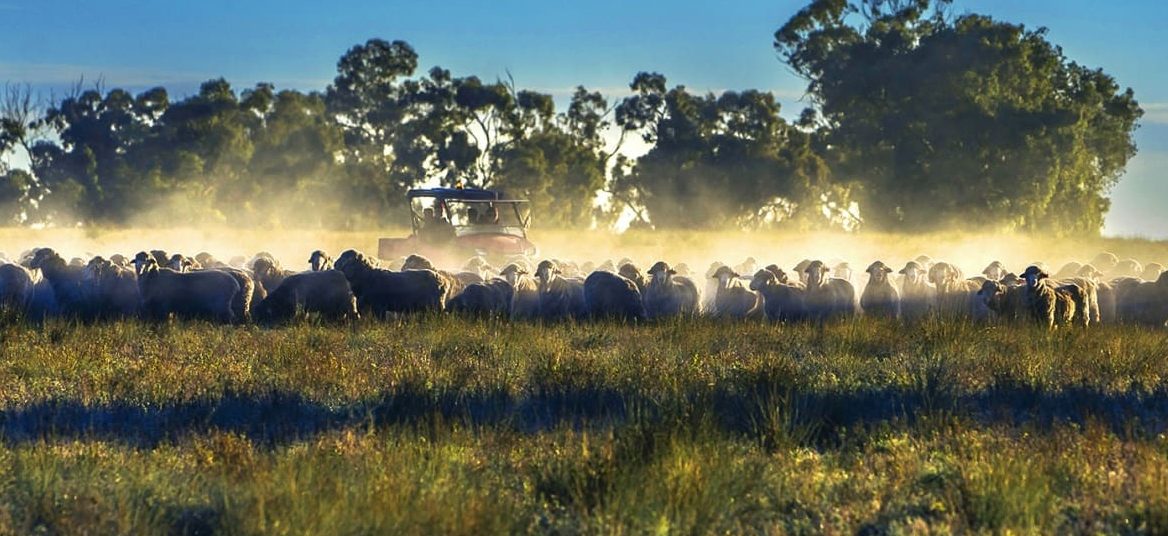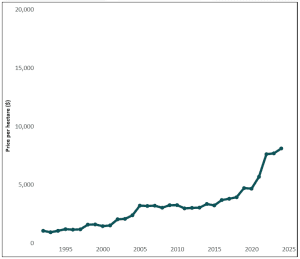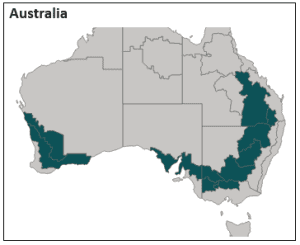
The wheat-sheep zone component of ABARES broadacre Farmland Price Indicator hit a new high in 2024. The region includes the Central West of NSW, home to the Darriwell Aggregation at Trundle which sold last year. Photo: Elders
ABARES Farmland Price Indicator for cropping land fell during 2024 to $8309.12/ha, down from a record high of $8633.59 in 2023.
A modest gain for the southern region reflected values over South Australia, Tasmania, and Victoria, while the indicator eased for the northern region, covering New South Wales and Queensland, as well as Western Australia.
The broadacre indicator at $9616.94/ha is up slightly from $9429.05 in 2023, and just above $9575.89 in 2022.

The wheat-sheep zone component of the ABARES broadacre Farmland Price Indicator hit a new high in 2024. Source: ABARES
It incorporates the national wheat-sheep zone, that hit a new high of $8072.77/ha in 2024, up from $7649.70 in 2023.
In the states making up the broadacre indicator, minor moves were seen for Victoria at $12,084.45, Queensland at $7219.03, and South Australia at $7736.33, while the NSW indicator fell sharply to $9547.18.
The Northern Territory’s broadacre indicator on $5012.64 posted a modest gain, while WA’s leapt to $11,103.02 from $9350.41, and Tasmania’s hit a national high of $18,366.74.
The volume of broadacre farmland transactions has decreased, from 4445 transactions in 2021 to 2258 transactions in 2024.

Green areas indicate Australia’s wheat-sheep zone which goes into the broadacre indicator. Source: ABARES
The value of dairy land of $24,821.62 was down from the 2023 peak of $39,349.76, largely due to a plunge in SA dairy land values to $17.656.55 which weighed down level or stronger markets in Tasmania, Gippsland, western Victoria, and the Murray.
ABARES said the 2024 data confirms broadacre farmland prices have continued their plateau for a second straight year after decade of strong growth, which had seen broadacre farmland rates increase by more than 10 percent per year on average.
ABARES executive director Jared Greenville said farmland prices can be a double-edged sword.
“On one hand, higher land prices boost farmer wealth and equity levels,” Dr Greenville said.
“This in turn increases lending capacity and supports productivity growth by allowing farmers to access capital for further investments in land and technology.”
“On the other hand, relatively high land prices may create a barrier to entry and expansion.
“We have seen strong annual growth in the Tasmanian dairy farmland (14.1pc), as well as national cropping farmland (13.7pc) and beef farmland in the southern region of Australia (13.8pc).
“Average annual price growth over the past 10 years has been lowest for hobby farmland (4.1pc) and sugarcane farmland (6.2pc).”
Source: ABARES